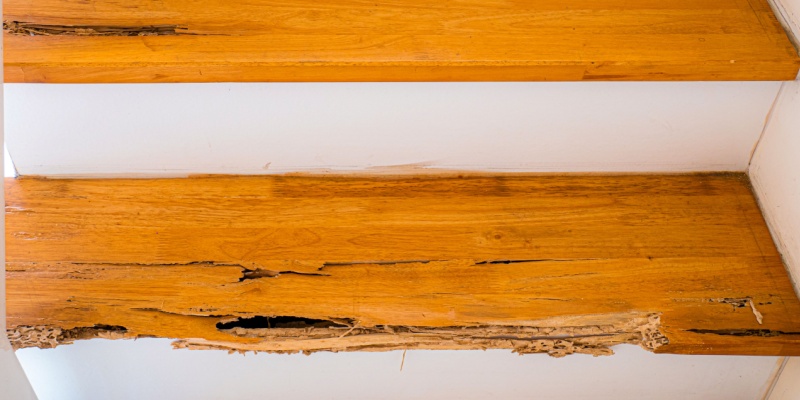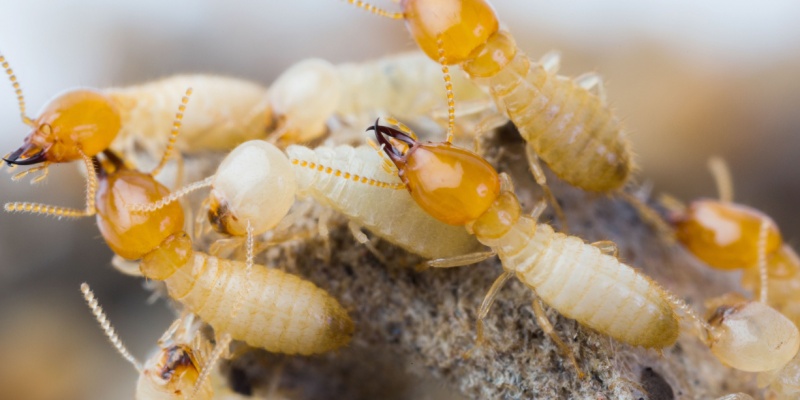Drywood termites are notorious for causing significant structural damage to homes and buildings. Unlike their subterranean counterparts, drywood termites live entirely within the wood they infest, making them particularly destructive. Understanding the potential costs and implications of a drywood termite infestation is essential for homeowners. Here’s a detailed look at how these pests can cause expensive damage and what you can do to protect your home:
1. The Nature of Drywood Termite Damage
Drywood termites consume wood from the inside out, creating intricate networks of tunnels and chambers. This hidden activity can go unnoticed for years, leading to severe structural damage by the time it’s discovered.
- Structural Weakening: As drywood termites hollow out wooden beams, floors, and walls, they compromise the structural integrity of your home. This weakening can lead to sagging floors, warped walls, and even collapse in severe cases.
- Aesthetic Damage: Drywood termite infestations can also cause visible damage to wooden furniture, flooring, and decorative elements. The damage often manifests as cracked or blistered wood surfaces and tiny holes where termites have entered or exited.
- Secondary Issues: The moisture introduced by termite activity can lead to secondary problems such as mold growth and wood rot, further increasing repair costs.
2. Identifying Drywood Termite Damage
Detecting drywood termite damage early is crucial to minimizing repair costs. Here are some signs to look for:
- Discarded Wings: After swarming, drywood termites shed their wings. These discarded wings can often be found near windowsills and doorways.
- Frass (Termite Droppings): Drywood termites produce small, pellet-like droppings known as frass. These can accumulate in small piles around the infested areas.
- Hollow Sounding Wood: Tapping on wooden surfaces that sound hollow or exhibit a papery texture can indicate termite damage.
- Visible Tunnels: If you see intricate tunnel patterns on the surface of wood, it’s a clear sign of drywood termite activity.
3. Financial Implications of Termite Damage
The cost of repairing drywood termite damage can be substantial. Here are some factors that influence the financial burden:
- Extent of Infestation: The larger and more widespread the infestation, the higher the repair costs. Severe infestations may require replacing entire sections of a building.
- Type of Wood Damage: Structural repairs to beams, joists, and support structures are typically more expensive than fixing cosmetic damage to furniture or flooring.
- Secondary Damage: Costs can escalate if termite activity leads to mold growth or wood rot, requiring additional remediation efforts.
- Treatment and Prevention: In addition to repair costs, homeowners must consider the expense of professional termite treatment and ongoing prevention measures.
4. Preventing Expensive Damage
Preventing drywood termite infestations is the best way to avoid costly repairs. Here are some preventative measures:
- Regular Inspections: Schedule annual inspections with a professional pest control company. Early detection is key to preventing extensive damage.
- Wood Treatment: Consider treating exposed wood with termiticides to create a protective barrier against termites.
- Moisture Control: Fix any leaks and ensure proper ventilation in your home to reduce moisture, which attracts termites.
- Sealing Cracks: Seal cracks and crevices in your home’s foundation, walls, and roof to prevent termites from entering.
5. Professional Termite Control
Hiring a professional termite control specialist is crucial for effective prevention and treatment. Professionals can:
- Accurately Identify Infestations: They have the expertise to identify the type and extent of termite infestations.
- Implement Effective Treatments: Professionals use advanced treatments that are more effective than DIY methods.
- Provide Ongoing Monitoring: Regular monitoring by professionals helps catch new infestations early, reducing the risk of severe damage.
6. Insurance Considerations
Homeowners should be aware that standard homeowner’s insurance policies typically do not cover termite damage. This is because termite infestations are considered preventable through proper maintenance. Therefore, investing in preventative measures and regular inspections is even more critical.
7. The Value of Swift Action
Taking swift action at the first sign of termite activity can save you thousands of dollars in repair costs. Here’s what you should do:
- Immediate Inspection: If you suspect termite activity, contact a professional pest control company immediately for an inspection.
- Follow Recommendations: Adhere to the treatment and prevention recommendations provided by the professionals.
- Regular Maintenance: Continue with regular inspections and maintenance to keep your home protected.
Drywood termites are a formidable threat that can cause expensive damage if left unchecked. By understanding the risks and taking proactive measures, homeowners can protect their investments and maintain the structural integrity of their homes. Get in touch with the termite pros at the Bug Baron Exterminator to schedule a termite inspection for your home.



